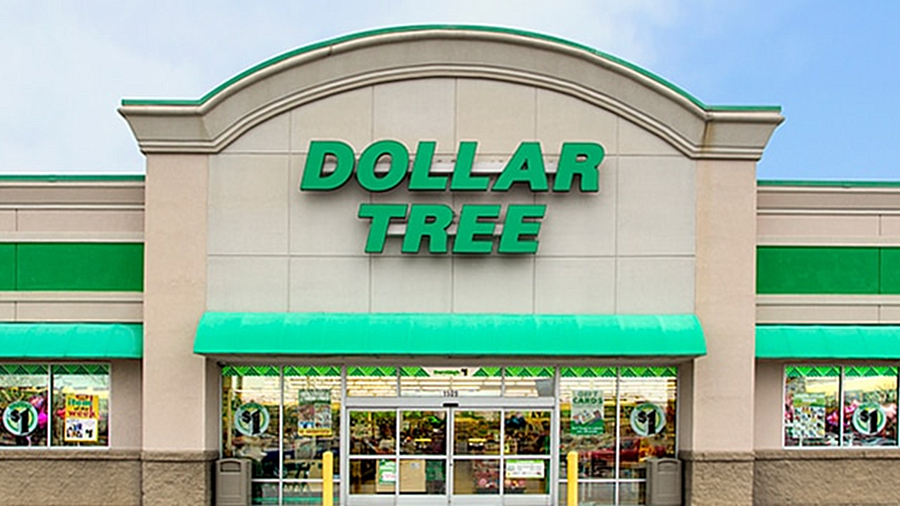Dollar Tree Is Revamping Their Branding
Dollar Tree is revamping itself to accommodate consistently rising prices.
This article is more than 2 years old

It was a brand that was successful for 35 years and a brand that was devout to its customer. But now, Dollar Tree is chucking those “Everything’s $1” signs that have been so prominent throughout each and every store across the country as its rebranding is underway.
Last week, the popular chain store (with nearly 8,000 stores that bear its name) announced that the $1 thing will be no longer as they will be permanently raising prices on the majority of its products by a whopping 25%. These new prices have already been seen in a number of Dollar Tree stores and they expect the full pricing change to be in effect by the first quarter of next year.
To help employees deal with its rebranding and the flack it may receive from loyal customers, Dollar Tree plans on training staff members on how to handle customers who may be confused as to why prices are no longer $1. The chain store also plans to run mass advertising to help prevent surprise and confusion as well.
Of all the major dollar store chains the country has seen, Dollar Tree was the last of them who actually sold their goods for $1. They defined themselves as the $1 king, boasting that they were the leading retailer of fixed-price point stores across the country.
This move is big. It goes against everything management has stood for. Sadly, though, it’s a reflection of where we are as a country. Rising inflation, supply chain crises, and workforce issues have forced Dollar Tree’s hand. They fought a good fight, but at some point, they had to roll with the changes or fear the closure of all their stores. The $1 price point was actually hurting business.
This rebranding, though, did not come out of the blue for Dollar Tree. The last of the “one dollar’s” said earlier in September that they were going to start selling products for $1.25 and $1.50 at some of their stores for the first time ever. They also announced that they were going to add $3 and $5 items to over 5,000 of their stores, leaning into their new strategy.

“This is the appropriate time to shift away from the constraints of the $1 price point,” Dollar Tree CEO Michael Witynski said in a statement Tuesday via CNN Business. He also added that this move was a “monumental step” for the Dollar Tree brand.
So, how did Witynski come to this final conclusion? Costs that continue to climb.
Dollar Tree made its living by working out of small, no-frill stores and by selling food, households staples, toys, gifts, and even seasonal goods in a business model that clamped down on costs for fuel, labor, domestic transportation, merchandise, and overseas shipping.
As time has gone on, especially as the COVID pandemic took hold around the world, Dollar Tree, like most businesses, was struggling to stay afloat. They could see that they would no longer be able to hold their fixed prices and maintain profitability. A change was necessary and imminent.
As profits dropped while everything else rose, Dollar Tree was forced to regroup. During the first three-quarters of 2021, Dollar Tree’s profit margin dropped 1.5% compared to the same timeframe of last year. According to the Labor Department, the producer-price index jumped 8.6% over one year, which matched annual record highs.
Witynski says Dollar Tree’s price jump is not a reaction to the short-term but will help the chain return to its normal profit margin of around 35%. On a recent earnings call, Witynski explained that selling stuff for even $1.25 will “enable us to mitigate historically high merchandising cost increases, including freight and distribution.”
Although customers may be upset with the rising prices, what they need to know is when you’re selling stuff for $1, the store is very limited on what products they can sell by size and quality. The fixed price-point of $1 began to force Dollar Tree to stop offering some of the customer favorites, which also didn’t make them happy. Now, though, with the prices increase, these favorites can be brought back, and customers will also see new products and bigger sizes in terms of things like laundry detergent and other household essentials.
With Dollar tree and the other former “dollar” stores have already introduced higher prices, they feel customers are well prepared to see full-time higher prices. The chain store even conducted surveys with its base to get an idea of where they stand with prices on the rise.
“Our shoppers are responding favorably,” said Witynski. He says seeing the other discount store prices and how high they’ve gone; they know they can come back to Dollar Tree and still find products less expensive than the other stores.
It is a strategy based on necessity. It’s a sink or swim environment and Dollar Tree has chosen to swim. Now they just need to hope their loyal customers won’t revolt.





